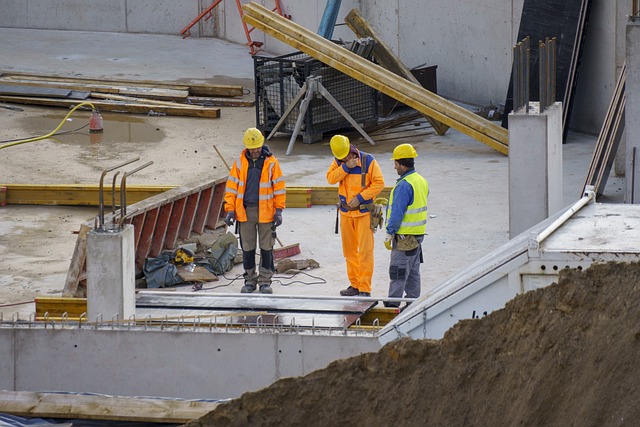High-capacity vacuum excavation services are transforming utility exposure in urban areas by offering a safe, non-destructive alternative to traditional methods. This advanced technique utilizes powerful vacuums to precisely remove soil around underground utilities, minimizing damage and disruption. Ideal for complex urban landscapes, it enables meticulous planning, reduces project downtime, saves costs, and protects vital infrastructure like water pipes, gas lines, and fiber optic cables. As a preferred method in non-destructive testing (NDT), high-capacity vacuum excavation services prioritize safety, efficiency, and sustainability in infrastructure maintenance and construction projects.
In the realm of infrastructure maintenance, safely exposing utilities without damage is paramount. This article explores advanced, non-destructive methods, focusing on the transformative potential of high-capacity vacuum excavation services. We delve into understanding vacuum excavation as a safe and reliable approach, highlighting its benefits in precision and cost-effectiveness. Additionally, we discuss best practices to ensure comprehensive protection during utility exposure, positioning this technology as a game-changer for efficient, secure infrastructure management.
Understanding Vacuum Excavation: A Safe and Non-Destructive Approach
Vacuum excavation, also known as vacuum trenching or non-destructive excavation, is a safe and effective method for exposing utilities underground. This technique utilises high-capacity vacuum equipment to suction soil and debris from trenches and burrows, revealing the buried infrastructure with minimal damage. It’s particularly valuable in urban areas where traditional excavation methods can pose significant risks due to the presence of vital utilities.
High-capacity vacuum excavation services offer several advantages over more invasive techniques. They reduce the risk of damaging underground pipelines, cables, and other critical facilities by eliminating the need for heavy machinery and mechanical digging. This non-destructive approach also enables precise location and mapping of underground assets, facilitating safer and more efficient maintenance, repair, or construction projects.
High-Capacity Vacuum Excavation Services: Unlocking Efficient Utility Exposure
In the realm of safe, non-destructive utility exposure, high-capacity vacuum excavation services stand out as a game-changer. This innovative method employs powerful vacuums to accurately and efficiently remove soil and other materials around underground utilities. By doing so, it offers a precise way to uncover pipes, cables, and other critical infrastructure without causing damage or disrupting surrounding areas.
High-capacity vacuum excavation is particularly beneficial in densely populated urban areas where navigating beneath bustling streets and highways is essential. This non-invasive technique allows for meticulous planning and execution, ensuring that utilities can be exposed with minimal disturbance to the landscape. Consequently, it’s a preferred choice for professionals who prioritize safety, efficiency, and sustainability in their utility exposure processes.
The Benefits of Non-Destructive Testing in Infrastructure Maintenance
Non-destructive testing (NDT) offers numerous advantages in infrastructure maintenance, making it a preferred method for many organizations and governments. One of the key benefits is its ability to expose utilities without causing damage, which is especially crucial for critical infrastructure like water pipes, gas lines, and electrical cables. Traditional excavation methods can be time-consuming, costly, and disruptive, leading to road closures, service interruptions, and environmental disturbances. In contrast, high-capacity vacuum excavation services provide a safe alternative.
By employing NDT techniques, maintenance crews can accurately locate and inspect underground utilities before performing any work. This proactive approach reduces the risk of accidental damage, minimizes downtime, and saves significant costs associated with repairs or replacements. Moreover, it ensures the safety of workers by eliminating the need for hazardous excavation practices, making it an eco-friendly and worker-friendly solution.
Best Practices for Safe Utility Exposure: Ensuring Precision and Protection
When exposing utilities, precision and safety are paramount. Best practices involve employing advanced techniques like high-capacity vacuum excavation services, which minimize damage to underground infrastructure while accurately locating and exposing lines. This non-destructive method ensures the integrity of critical utilities, reducing the risk of service disruptions or safety hazards often associated with traditional dig-and-dig again methods.
By utilizing high-capacity vacuum excavation, utility workers gain clear visibility into the ground without causing unnecessary disturbance. This precision allows for more effective planning and execution, streamlining the entire process. Moreover, it protects sensitive utilities, such as water pipes, gas lines, and fiber optic cables, from potential damage or disruption during construction projects, thereby fostering a safer working environment and ensuring reliable service continuity.
In conclusion, adopting safe and non-destructive methods like high-capacity vacuum excavation services is paramount in infrastructure maintenance. These innovative techniques offer a precise, protective approach to exposing utilities, ensuring critical assets remain intact while enhancing overall efficiency. By embracing best practices and the benefits of non-destructive testing, professionals can revolutionize utility exposure, fostering a more robust and secure built environment.
